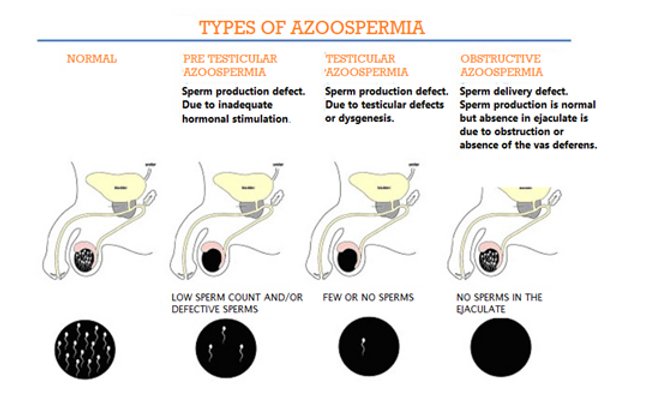Understanding Azoospermia: Causes, Diagnosis &
Treatment
What Causes Azoospermia?
Azoospermia, or the absence of sperm in the ejaculate, can occur due to two primary
reasons:
-
Obstructive Azoospermia: Caused by a blockage in the male
reproductive tract, where sperm production is normal but cannot reach the
ejaculate.
-
Non-Obstructive Azoospermia: Caused by impaired or poor
sperm production within the testicles.
How Common is Azoospermia?
Azoospermia affects about 1% of all men and approximately 10% to 15% of infertile
men, making it a significant cause of male infertility.
What Are the Genetic Causes of Azoospermia?
Genetics plays a role in 10%–15% of men with no or low sperm production. Chromosomal
abnormalities can affect sperm number, structure, and function. Specifically:
-
Defects may occur in the Y chromosome, which is essential for male
fertility.
-
Microdeletions in parts of the Y chromosome can lead to
infertility.
-
Chromosomal analysis can identify structural problems that impact sperm
production.
What to Do After an Azoospermia Diagnosis?
If you've had a semen analysis showing azoospermia:
-
Consult a male infertility specialist immediately.
-
Repeat the semen analysis at a reliable, experienced laboratory, as test
results can vary.
-
Even small amounts of sperm can significantly change treatment options, so
accurate testing is essential.
Does Azoospermia Mean the Testis Makes No Sperm?
Not necessarily. Some men with azoospermia may still be producing small amounts of
sperm in the testis, just not enough to appear in the ejaculate. Genetic testing and
counseling are crucial to understanding your options.
Is Surgery an Option for Obstructive Azoospermia?
Yes. In cases of obstructive azoospermia, microsurgical procedures may be performed
to reconstruct or reconnect blocked or damaged ducts, allowing sperm to be present
in the ejaculate.
Is Hormone Treatment Necessary?
Hormone therapy may be helpful for men with low hormone production. In
non-obstructive azoospermia, if viable sperm are found in the testis, they can be
retrieved for use in assisted reproductive techniques like:
-
In Vitro Fertilization (IVF)
-
Intracytoplasmic Sperm Injection (ICSI)
Men with non-obstructive azoospermia should undergo genetic testing before assisted
reproduction to assess any risk of passing genetic issues to their children.
Can Azoospermia Be Prevented?
While genetic causes cannot be prevented, the following lifestyle measures may help
reduce the risk of acquired azoospermia:
-
Avoid trauma or injury to the reproductive organs.
-
Minimize exposure to radiation and harmful environmental toxins.
-
Discuss any medications that may impair sperm production with your
doctor.
-
Avoid prolonged exposure of the testicles to high heat (e.g., hot tubs,
saunas).
Concerned about azoospermia or male infertility? Book your
appointment at Androplus and consult our fertility experts for
advanced diagnosis and personalized treatment.

